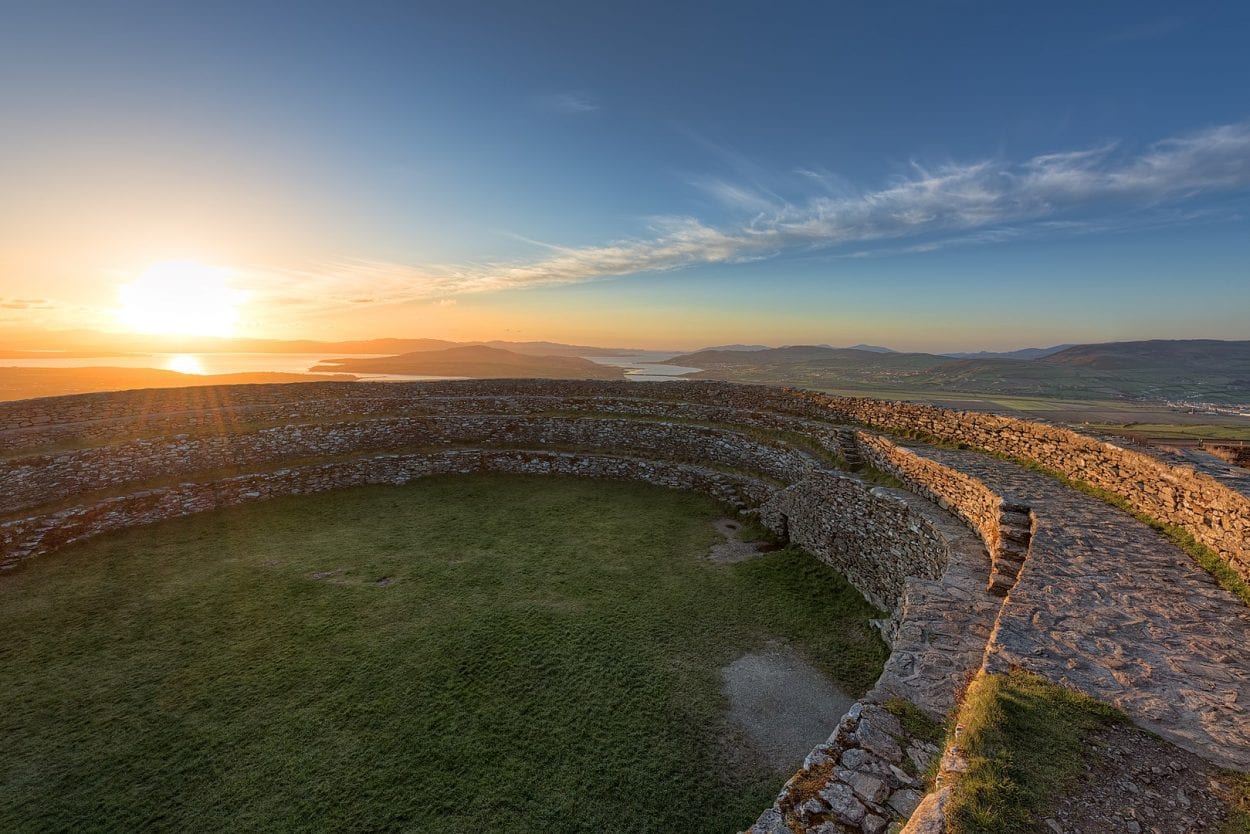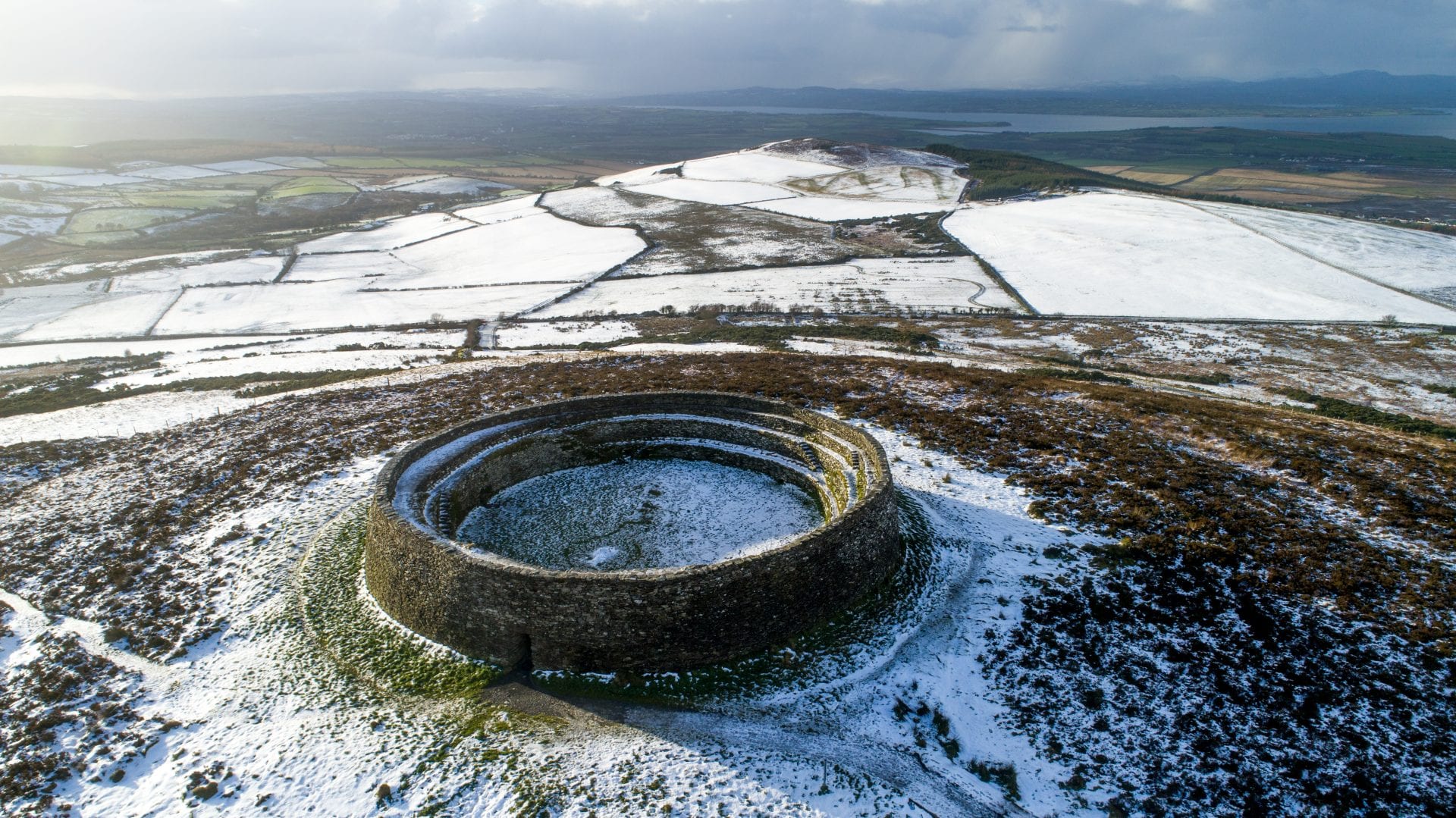The Grianan of Aileach, also called Greenan Ely or Greenan Fort, is a stone ringfort located on the summit of Greenan Mountain in County Donegal, Ireland.
The fort is believed to have been constructed by the Cenél nEógain, a branch of the Northern Uí Néill dynasties during the 8th or 9th century, serving as the principal seat of the Kings of Ailech which ruled the medieval Irish province of Ailech, otherwise known as the Kingdom of Ailech.
According to Irish mythology, the fort’s construction is attributed to the Dagda (meaning “the good god” or “the great god”), a deity and the celebrated king of the Tuatha Dé Danann who was associated with fertility, agriculture, manliness, strength, as well as magic, Druidry and wisdom.
In the Great Book of Lecan, a medieval Irish manuscript from the 14th or 15th century AD, it describes in verse 38 Ordnance Memoir of the parish of Templemore how the fort was erected around the grave of Dagda’s son Aedh, who was killed by the Connacht chieftain Corrgenn.
Archaeological evidence suggests that the fort is situated on the remains of an earlier Iron Age hillfort that dates from around 1000 BC, with evidence of earlier occupation in the Early Bronze Age and possibly the Neolithic period.

Three concentric ramparts made of earth and stone follow the contours of the summit of Greenan Mountain to form an irregular circular pattern, that enclose a central area which was likely used by the Cenél nEógain for inaugurations and other royal ceremonies.
Historians suggest that the monument was designed with less of a defensive function due to the impracticality of repelling invaders, but rather it was built as a symbol of royal power.
According to Irish annals, Grianan of Aileach was destroyed in AD 1101 by Muirchertach Ua Briain, king of Munster and rival to the Cenél nEógain king, Domnall Ua Lochlainn.
Substantial restoration and reconstruction work was carried out in the 1870’s using some of the fallen stones and many other stones quarried locally.
Header Image Credit : Ian Mitchinson – Shutterstock





